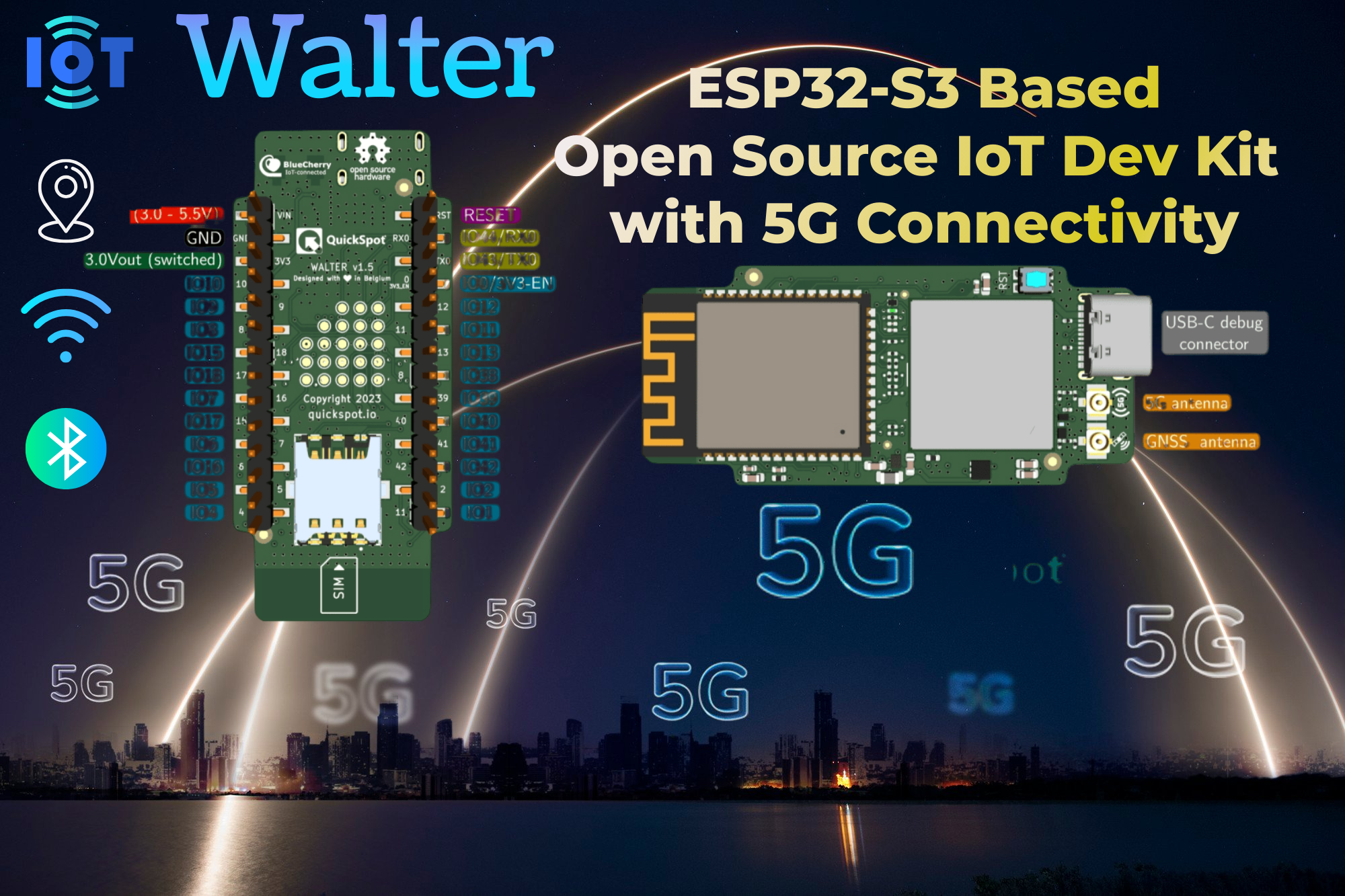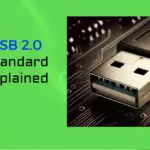Belgian tech company, DPTechnics BV, have just introduced Walter, an open-source development kit poised to revolutionize IoT prototyping. Built upon the Expressif ESP32-S3-WROOM-1-N16R2 module, Walter stands out with its remarkable amalgamation of 16MB flash memory, 2MB PSRAM, and unparalleled connectivity encompassing 5G LTE, GNSS, Wi-Fi, BLE-5, LTE-M, and NBIoT.

At the heart of Walter lies the ESP32-S3 microcontroller, powered by a dual-core 32-bit LX7 CPU. This microcontroller stands out with its 150 Mbps 802.11 b/g/n Wi-Fi 4 capabilities and a 2 Mbps Bluetooth 5 Low Energy interface, providing a robust foundation for wireless communication needs.
What sets Walter apart is its extended connectivity. Including the Sequans GM02SP 5G modem equips this dev kit with cutting-edge cellular capabilities, supporting LTE-M, NB-IoT, and GPS functionalities. This setup ensures seamless connectivity and adaptability, making it ideal for projects demanding reliable, high-speed wireless communication.
Developers will find Walter a flexible ally in their projects, with all I/O pins available without limitations, allowing for ultimate layout flexibility. Programming the module is a breeze, supporting the Arduino IDE, Micropython, JavaScript, and the Espressif IDF, offering to varied developer preferences and workflows.
Beyond its impressive technical specifications, Walter’s applications in the IoT domain are vast. Imagine deploying IoT solutions in remote areas or building smart devices that require ultra-reliable connectivity; Walter’s 5G LTE connectivity ensures a robust link, enabling real-time data collection for precision agriculture or environmental monitoring in smart city projects.
Moreover, its compact form factor of 55mm x 24.8mm opens doors for integration into various IoT devices, making it an adaptable choice for wearables, environmental sensors, or smart city solutions.
One of the significant advantages lies in Walter’s open-source nature, fostering collaboration and innovation within the developer community. Coupled with its European Union production, CE, FCC certifications, and a ten-year availability guarantee, Walter stands as a beacon of reliability and long-term commitment.
In essence, Walter isn’t just a development board; it’s a game-changer in the field of IoT prototyping. Its robust hardware, versatile connectivity options, and commitment to open-source innovation make it a compelling choice for developers aiming to revolutionize how we interact with technology.
Walter, featuring the Xtensa dual-core 32-bit LX7 CPU, handles complex tasks efficiently. It offers 16 MiB quad SPI flash memory for code and data storage, complemented by 2 MB quad SPI PSRAM for multitasking or managing larger datasets. With 150 Mbps 802.11 b/g/n Wi-Fi 4 and 2 Mbps Bluetooth 5 Low Energy, it ensures high-speed Wi-Fi connectivity and low-power, short-range communication, respectively.
Connectivity-wise, Walter integrates the Sequans GM02SP 5G Modem for reliable dual-mode LTE-M/NB-IoT (NB1, NB2) connections. It supports 3GPP LTE release 14, upgradable to release 17, for future enhancements. Walter’s ultra-low, deep-sleep mode and adaptive power output optimize power usage for extended battery life. The integrated LNA and SAW filter enhance GNSS reception, supporting precise global navigation.
Additional features include assisted and non-assisted GNSS with GPS and Galileo constellations, simplifying global navigation. It offers an integrated SIM card and Nano SIM card slot for streamlined cellular connectivity integration. The u.FL RF connectors enable stronger signals with external antennas.
Input and output options encompass 24 GPIO pins for versatile external device interfacing, supporting multiple communication protocols like UART, SPI, I2C, CAN, I2S, and SD. The microcontroller integrates ADC, DAC, and PWM functionalities for analog/digital conversion and device control. Additionally, it offers 3.3 V software-controllable output for flexible voltage management.
In terms of hardware, Walter includes a USB Type-C connector for flashing and debugging, aiding in programming. It features 22 test points for production programming and testing, ensuring quality control. The onboard reset button provides quick reset functionality.
Power-wise, it supports dual power supply options: 5.0 V via USB Type-C and 3.0 – 5.5 V via Vin pin (with the limitation of not using both inputs simultaneously). Its design focuses on extremely low quiescent current, minimizing standby power for prolonged battery life. The compact form factor (55 mm x 24.8 mm) easily integrates into various IoT devices and is compatible with 2.54 mm headers for smooth hardware transitions.
For software support, Walter offers libraries for ESP-IDF, Arduino, and Micropython, offering to different programming environments. It also promises future support for Toit, indicating ongoing software development for potential expansions. Walter is natively supported in the BlueCherry.io IoT platform, facilitating integration. Certification-wise, it features an industrial temperature range and is pending CE, FCC, Australia, and New Zealand certifications, ensuring regulatory compliance. Designed and manufactured in the European Union, Walter assures quality and commitment with a ten-year availability guarantee.
Author Profile
- 20+ years embedded hardware design professional with a burning passion for teaching. Sharing the intricate world of embedded hardware is my mission and joy.
Latest entries
 Tech Updates12 October 2024Explore the Wireless Connectivity With NXP’s FRDM-RW612 Development Board
Tech Updates12 October 2024Explore the Wireless Connectivity With NXP’s FRDM-RW612 Development Board USB6 October 2024USB 2.0 Standard Explained
USB6 October 2024USB 2.0 Standard Explained USB20 September 2024USB – (Universal Serial Bus) Overview, Purpose, Standards and Types
USB20 September 2024USB – (Universal Serial Bus) Overview, Purpose, Standards and Types Tech Updates8 September 2024Renesas Introduces the RRH62000- A Game-Changer in Indoor Air Quality Monitoring
Tech Updates8 September 2024Renesas Introduces the RRH62000- A Game-Changer in Indoor Air Quality Monitoring











